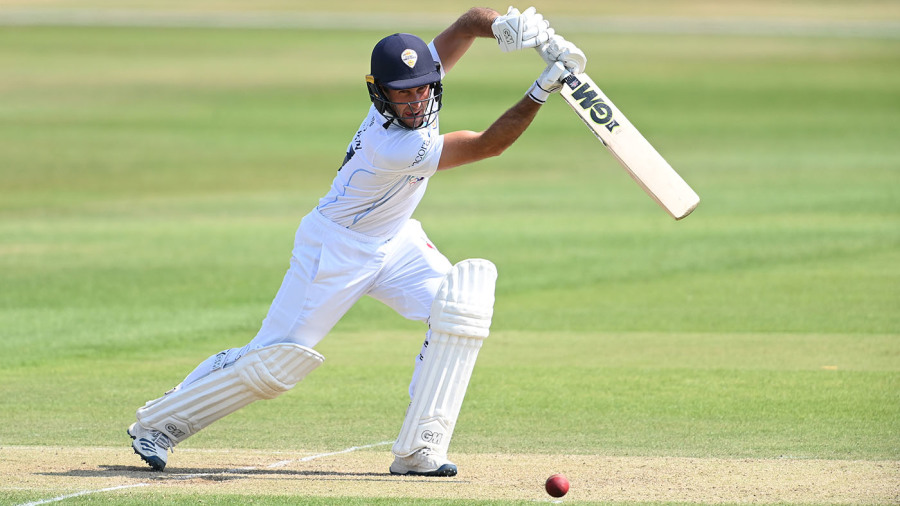![cricket:image:1429484 [900x506]](https://a.espncdn.com/i/cricket/cricinfo/1429484_900x506.jpg)
What surprised NFL execs about the draft s 14-pick offensive flurry and what didn t
Sixteen matches played, 27,840 balls bowled, 16,817 runs scored, 378 wickets taken - yet only one outright result. The first two weeks of the Championship season have been a grind. The second round of games was historic: for only the third time when all 18 counties played simultaneously, not a single one registered a win.
The first two weeks of April rarely produce gripping cricket in England, but this year has been worse than usual for a number of interdependent reasons: wet weather through the winter creating particularly soft, slow pitches; the trial of a Kookaburra ball instead of the usual Dukes; and the loss of hundreds of overs due to rain.
In the first two rounds of the 2023 season, there were 11 positive results in 16 completed matches. But bowlers across the country have struggled to get batters out in the early stage of this season: a wicket fell every 54.9 balls in the first two rounds last year, compared to one every 73.7 balls to date in 2024.
The difference between the balls is well-established: the Kookaburra is machine-made in Australia, while the Dukes is hand-stitched in the UK. "It doesn't swing as much as the Dukes," James Anderson explained on the Tailenders podcast. "There's a different lacquer that coats it… the Dukes, for some reason, swings more and for longer."
The idea came from Andrew Strauss' high-performance review, which highlighted the dearth of genuine pace and spin in English domestic cricket. "We aren't encouraging the development of the 'extreme' skills required to succeed in international cricket," the review said. It proposed a pilot trial to "test the impact on bowlers' skills development", and two rounds were played with the Kookaburra last summer.
The pilot has not been universally popular. Alec Stewart, Surrey's director of cricket, has described the Kookaburra's implementation as "the worst decision ever". Alfonso Thomas, the Leicestershire coach, said it has "made average batters look very good". When Somerset skipper Lewis Gregory was asked for his view, he replied: "Can I swear?"
The need to hit the deck hard with the Kookaburra has been offset by the fact that early season English decks are not hard. That also meant short-ball plans -- something bowlers turn to when a ball of any shape stops moving through the air -- were ineffectual. Some teams were also bemused that no two balls seemed to behave the same.
Others saw the merit. Grant Bradburn, Glamorgan's coach, believes the trial will "help bowlers become better". Cameron Steel, Surrey's legspinning allrounder, is the leading wicket-taker in Division One. "Spinners around the country are happy to have had more of a bowl than they probably otherwise would've in previous seasons in April," he said after his second five-wicket haul in as many games.
And Sam Cook, the Essex seamer, pressed his England case when forcing the only win of the season so far, taking 10 for 73 at Trent Bridge. Cook has been a consistent wicket-taker for five years but was particularly pleased to prove himself with a Kookaburra. "When it does get a little soft, it's about using your skills, whether it's a little bit of wobble-seam or reverse-swing," he said.
Seamers across the country will breathe a sigh of relief when they get the Dukes back in their hands on Friday, which will be used for the foreseeable future. This year's trial will see two more rounds played with the Kookaburra in late August and early September, at which point pitches should be drier, firmer, and therefore more receptive to the ball.
Speaking on Monday, England men's managing director Rob Key hailed a "fantastic" first two rounds, not least because it seemingly nullified those seamers who lean heavily on the movement of the Dukes. If it were up to him - rather than the ECB Professional Games' Committee - the red Kookaburra would be the default county ball.
"You see what four-day cricket is meant to be," Key told the Guardian. "I've watched quite a bit this week and seen some bloody good cricket. I would use the Kookaburra all the time. English cricket would be much better off for it.
"The pitches are slow this time of year but watching medium-pacers is a waste of time. Teams need to find quicker bowlers or ones who will force a wicket. You can't just keep running up bowling at 75mph. And in terms of those guys who are not express, you really work out who can bowl. Sam Cook, that was seriously impressive what he did.
"Why do we think in India their batters come into the Test side averaging 70 [in the Ranji Trophy]? Do you think they're playing with a little nibbly Dukes ball where it's doing all sorts? What do we want to be? I want us to be the best team in the world for a generation; this will be one way to do that."
Key's words might seem harsh, but they tally with his view on county cricket before the success of England men's teams - particularly overseas, and especially the Ashes in Australia - fell under his brief. As he described in his autobiography, Oi, Key: "County cricket exists only because of the money from Test cricket, the England Test team only because of the Championship conveyor belt. They are the ultimate odd couple: worlds apart, but unable to get divorced because they are so utterly reliant on one another."
Ultimately, the debate over the ball boils down to a fundamental question: what is the purpose of the County Championship? It has two main functions: to help develop English cricketers who go onto play internationally; and as a sporting competition in its own right, which still attracts interest both at home and overseas and which every male professional in the country would love to win.
If using the Kookaburra emboldens counties to bowl their spinners and throws up a contender for England selection, like Cook, does that outweigh the drawbacks of a single result in 16 matches (with two complete abandonments) and some dreary cricket played in front of sparse crowds? That is the question that Key and the ECB must weigh up when they decide whether this experiment should continue.













